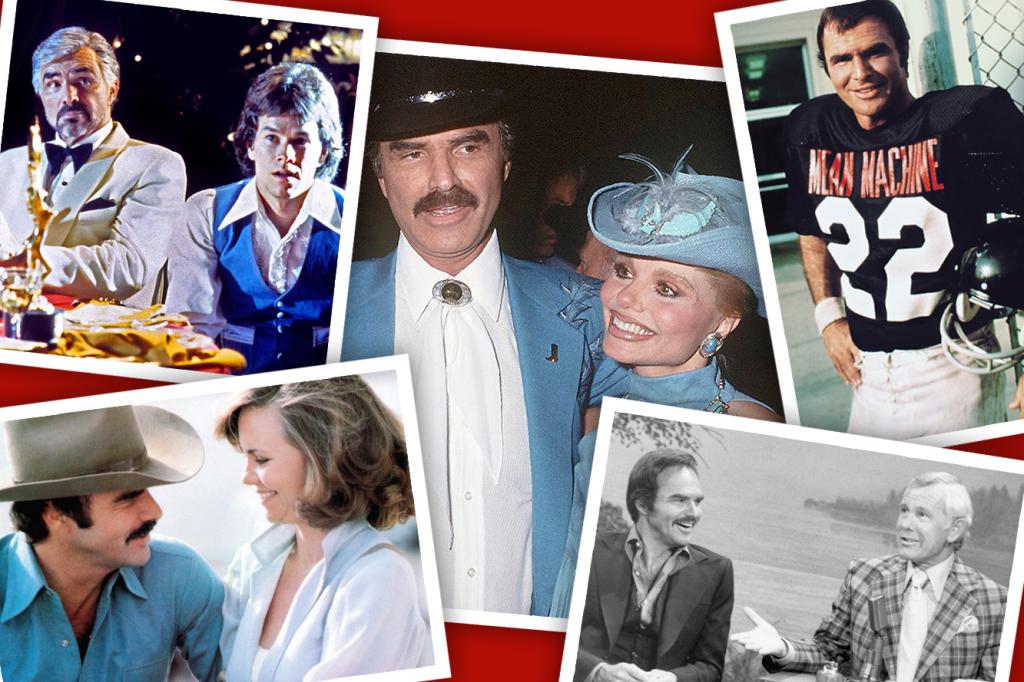“I Am Burt Reynolds” is making its long-awaited television premiere.
The award-winning documentary, directed by Adrian Buitenhuis, traces Reynolds’ storied Hollywood career — he was, from 1975 to 1982, the world’s biggest movie star — from his early television roles to his breakout movies (“Deliverance,” “The Longest Yard,” “Smokey and the Bandit”) to his romances, including his marriage to Loni Anderson and their headlining divorce.
Reynolds, who also won an Emmy for the CBS sitcom “Evening Shade,” died in 2018 at the age of 82.
“I Am Burt Reynolds” premieres Dec. 30 (8 p.m.) on the CW as the latest installment in its “I Am” series.
“Burt’s story is the thread of someone who had been around since old Hollywood and how [the industry] evolved through him,” Buitenhuis told The Post. “When you go back through someone’s life and films in relationship to their personal life it changes how you look at their movies.
“This is a man who hasn’t been given his due and it was an amazing story to be told — the scope of his generational, decadeslong career with tons of great films to pull from and a family that was behind the idea.”
Anderson, to whom Reynolds was married from 1988 to 1994, is an active participant in the documentary, as is Quinton Reynolds, 35, the son she and Reynolds adopted in 1988.
“Loni and Burt, even during their big divorce, were in constant communication — they saw and talked to each other and the media version of what happened between them is totally off,” Buitenhuis said. “She still loves Burt and there’s no animosity there. She’s very much a part of preserving his life and legacy.”
One of the major threads running through “I Am Burt Reynolds” is the actor’s tricky relationship with his gruff, no-nonsense father, Burton Reynolds, from whom Burt constantly sought validation, which proved elusive at best.
“He saw what celebrity and fame did to his parents and the last thing he wanted to be was a celebrity,” Buitenhuis said of Quinton. “He’s the most low-key, heartwarming, wonderful guy. He got quite close to Burt later in life — they spent a lot of time together and [Quinton] was a caregiver … I don’t think there was ever a moment when they didn’t love each other.
“He didn’t get the love he wanted from his dad — all he really wanted was a hug and some approval for what he did,” Buitenhuis added of Reynolds. (His father is seen being interviewed in archival footage, as is Reynolds’ mother, Fern). “At the end [of Burton’s life] they came together in a nice way and when his dad passed they were on good terms.
“[Burton] being a war veteran and probably having some hardcore PTSD and his not having parents who were lovable, it was an intergenerational thing — and I think Burt wanted to show a lot of love to his son because of that. You see Burt’s desire for a connection with Quinton that he never really had with his own dad.”
“I Am Burt Reynolds” is replete with archival footage from Reynolds’ movies and from his classic appearances on Johnny Carson’s “Tonight Show” — appointment viewing in the ’70s and ’80s — and of Reynolds talking about his life and career in a Merv Griffin special from the height of Reynolds’ career, when he posed naked for Cosmopolitan magazine and “Deliverance” launched him into the Hollywood stratosphere (he dated Dinah Shore and Sally Field, among others).
“I Am Burt Reynolds” also covers the latter part of the star’s career, when back surgeries, temporomandibular joint dysfunction and an addiction to painkillers left him emaciated (and triggered false tabloid headlines that he had AIDS). But he rebounded with “Boogie Nights” and later “The Last Movie Star,” in which he played a not-so-thinly-veiled version of himself.
In later years, Reynolds also devoted himself to teaching acting classes at his theater in Jupiter, Florida (there’s footage of him in action with a group of students).
“This was an opportunity to tell the story about someone who had a huge impact, not only on film history, but on people and other actors in his life,” Buitenhuis said. “He lifted up so many people in his career.
“The goal of a good film — whether it’s fiction or not — is to make people think about their own lives and to feel empathy and relate,” he said. “I think Burt’s story, his journey through life, is an intense human story and one with a lot of ups and downs.
“He put a lot of passion into his work and got so far because of his talent and hard work,” Buitenhuis said. “I’d be remiss if I didn’t make a film about that for people to remember him.”




